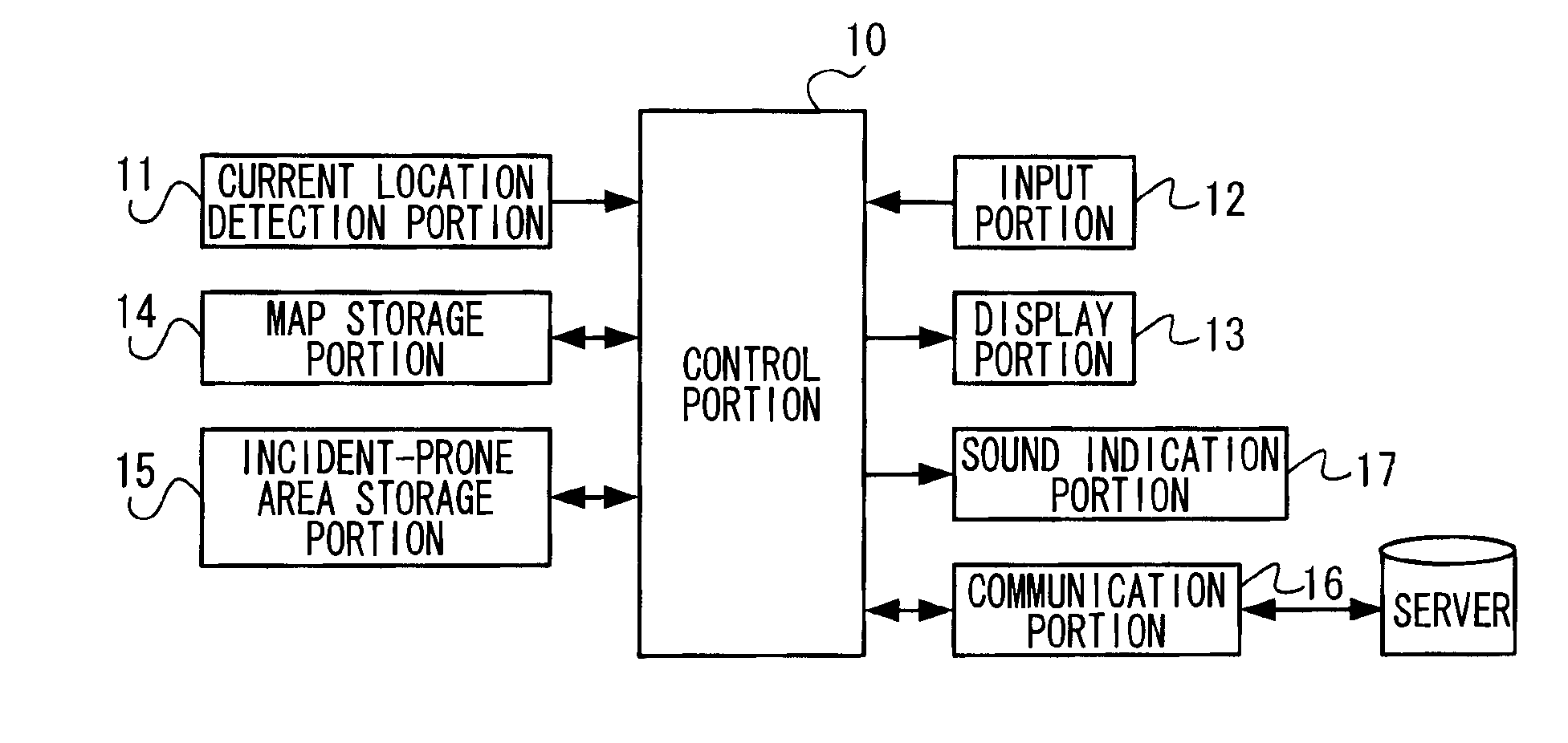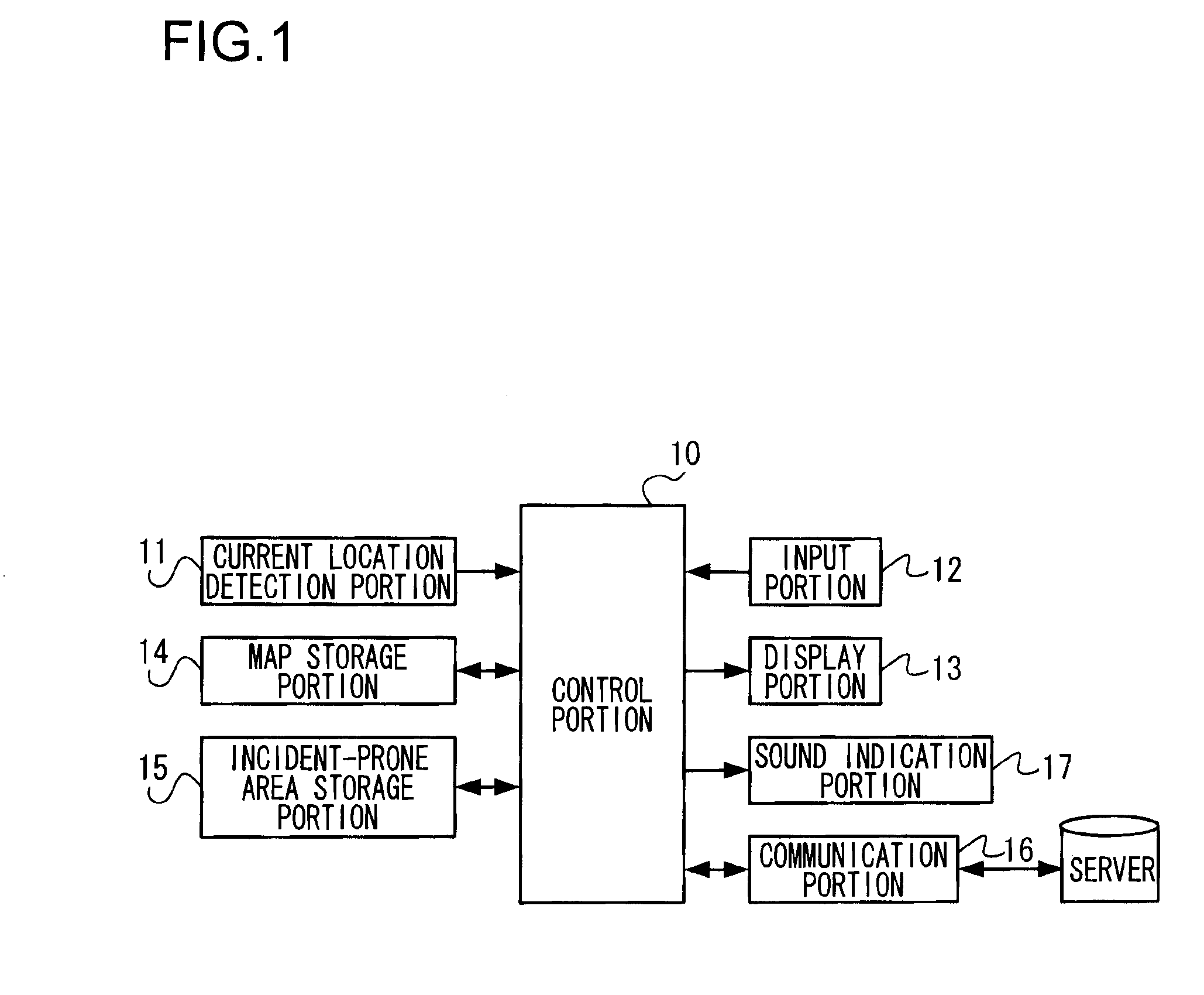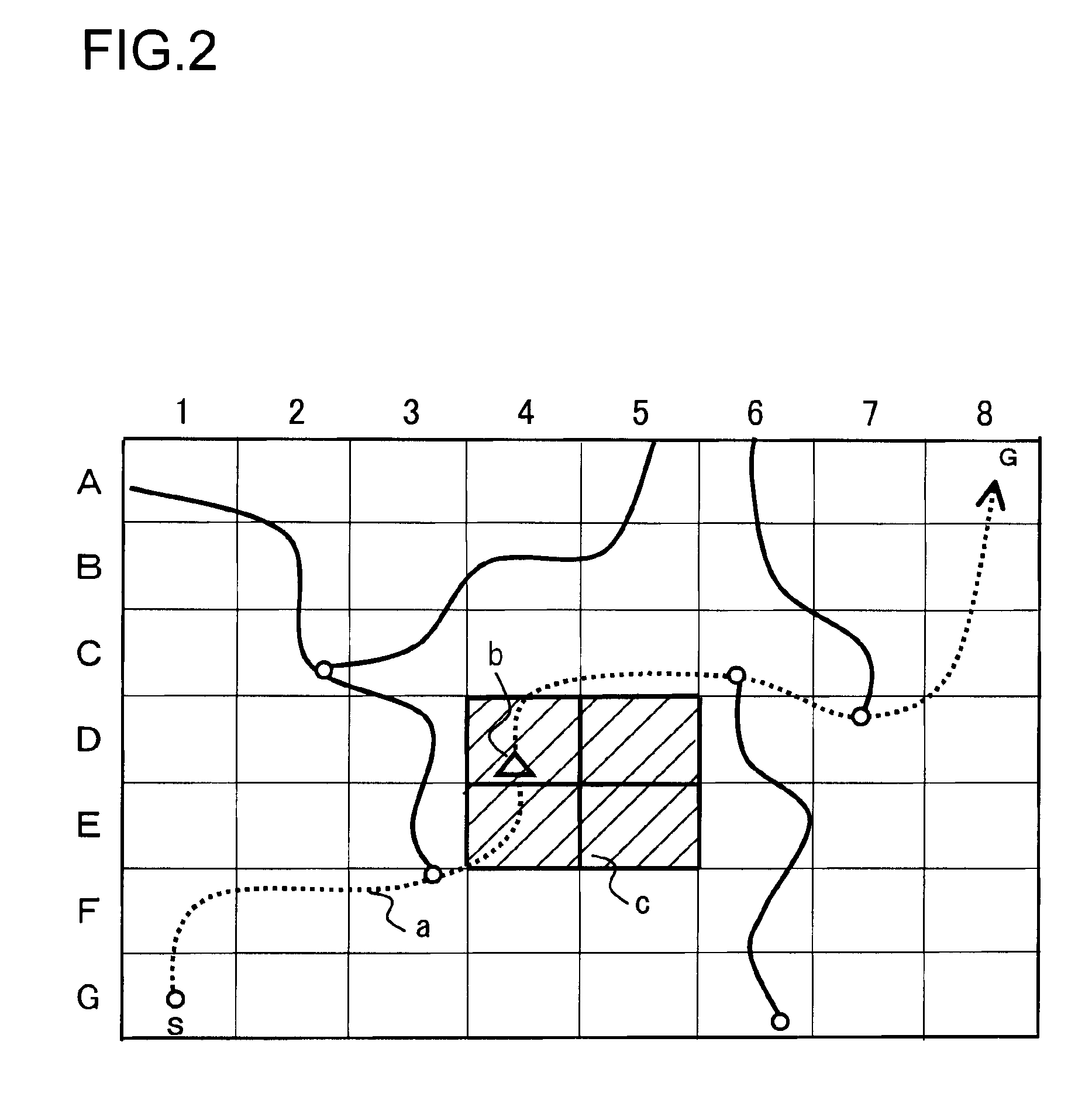Vehicle-mounted electronic device
a technology of electronic devices and vehicles, applied in the direction of navigation devices, instruments, transportation and packaging, etc., can solve the problems of easy theft, unusability, and relatively easy removal of vehicle-mounted electronic devices from the dashboard, and achieve the effect of high effectiveness
- Summary
- Abstract
- Description
- Claims
- Application Information
AI Technical Summary
Benefits of technology
Problems solved by technology
Method used
Image
Examples
working example 1
[0072]Next, referring to the flow chart of FIG. 5, the following describes a control operation of the control portion 10 in the vehicle-mounted navigation apparatus of the present invention.
[0073]This flow chart is described using as an example a case of using data on areas prone to theft of a vehicle or the vehicle-mounted navigation apparatus.
[0074]Moreover, the description of this flow chart is based not on an example in which the occurrence rate of theft in each area is stored but on an example in which the occurrence rate of theft in each facility within each area is stored.
[0075]A route search function of the vehicle-mounted navigation apparatus is activated (step 1), and once a destination (generally, a facility such as a house, a store, or a building) is designated via the input portion 12 (step 2), a comparison is made between theft-prone area data stored in the incident-prone area storage portion 15 and the destination designated in step 2, and based on a result thereof, i...
working example 2
[0080]Working Example 1 is directed to a case where the occurrence rate of theft at a destination is constant regardless of a time slot. The occurrence rate, however, may vary, for example, between daytime and nighttime. Referring to the flow chart of FIG. 6A, Working Example 2 describes an example of a case where data on the occurrence rate in each time slot as shown in FIG. 4B is stored in the incident-prone area storage portion 15.
[0081]In FIG. 6A, processing steps at steps 11 to 12 are the same as those at steps 1 to 2 in FIG. 5, respectively. An arrival time is estimated by obtaining a current time and by adding to the current time, a length of time required to follow a route searched for using the route search function (step 13). If, based on the data shown in FIG. 4B, the occurrence rate of theft in a designated destination facility at the arrival time (or in a time slot after a lapse of a predetermined length of time from the arrival time) is not less than a predetermined va...
working example 3
[0089]There are various types of vehicle-related incidents, and warning modes respectively suitable therefor are thinkable. For example, theft is classified into theft of a vehicle itself and theft of in-vehicle equipment such as a vehicle-mounted navigation apparatus or goods loaded on a vehicle (a so-called vehicle break-in), and it is preferable that a warning be given so as to be suitable for each of these types of theft.
[0090]With respect to theft of a vehicle, possible warnings include, for example, “Beware! Vehicle theft frequently occurs here.”, and with respect to a vehicle break-in, possible warnings include, for example, “Theft of in-vehicle equipment frequently occurs here. Do not leave valuables in vehicle.”
[0091]FIG. 7 shows a flow chart regarding this working example, in which processing steps at steps 21 to 22 are the same as processing steps at steps 1 to 2 in FIG. 5, respectively. If the occurrence rate of theft in a designated destination facility or in an area in...
PUM
 Login to View More
Login to View More Abstract
Description
Claims
Application Information
 Login to View More
Login to View More - R&D Engineer
- R&D Manager
- IP Professional
- Industry Leading Data Capabilities
- Powerful AI technology
- Patent DNA Extraction
Browse by: Latest US Patents, China's latest patents, Technical Efficacy Thesaurus, Application Domain, Technology Topic, Popular Technical Reports.
© 2024 PatSnap. All rights reserved.Legal|Privacy policy|Modern Slavery Act Transparency Statement|Sitemap|About US| Contact US: help@patsnap.com










